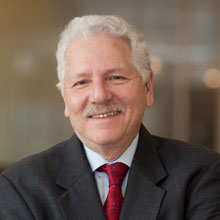Danny Leipziger is a professor of international business and international affairs in the GW School of Business. 
Faced with declining real incomes for many Americans and a distribution of income that has returned to levels of inequality not seen since the Great Depression of 1929, many voices are speaking out in favor of raising the minimum wage.
A case in point is the D.C. Council, which voted unanimously last month to increase the District’s minimum wage incrementally to one of the highest in the nation over the next few years, starting with an increase to $9.50 this July.
But while raising the minimum wage could benefit some, doing so is unlikely to be the panacea that some believe it to be.
To set the record straight, the U. S. is facing an unprecedented challenge of regaining economic momentum after the Great Recession, reversing persistently high rate of unemployment, and dealing with fears of jobless growth. Basic economics would advise against raising the minimum wage when unemployment is high and recovery still precarious.
Still, some would argue that it is better to pay people earning the lowest wages more, even if that slows some employment possibilities and encourages some labor-saving. (If you’ve taken an introduction to microeconomics course and are familiar with the term “elasticity of demand for labor,” you’ll know what I’m talking about).
What is less well known, however, is that less than 5 percent of American workers actually earn the minimum wage.
The biggest issue facing the American worker is that real earnings for the majority of them have fallen over the course of the last 30 years. Moreover, we see major profitable corporations paying no taxes whatsoever and the rich paying real tax rates lower than the middle class.
The problem of loopholes in the tax code and the inequity in tax burdens has shifted the debate to one of fairness. Major tax reform is long overdue, starting with a minimum corporate tax obligation.
The focus on the minimum wage might well be justified given the shocking fact that the inflation-adjusted minimum wage of 1968 was approximately $8.50 an hour compared to our $7.25 today. While it is true that wages need to be aligned with productivity, it is also true our incentives currently favor the use of capital and technology over the use of labor. This requires a reset.
So there is a case for raising the minimum wage, but will it solve the problems affecting the American worker? Not really.
Forty percent of American workers make less than $20,000 a year. So let’s not simply focus on the 5 percent of the work force earning the minimum wage, but rather on the 35 percent that are earning too little by most objective welfare measures and another large chunk of the middle class that has seen its real earning drop while the top one-percent tripled its income share between 1978 and today. This is the real problem facing America.




